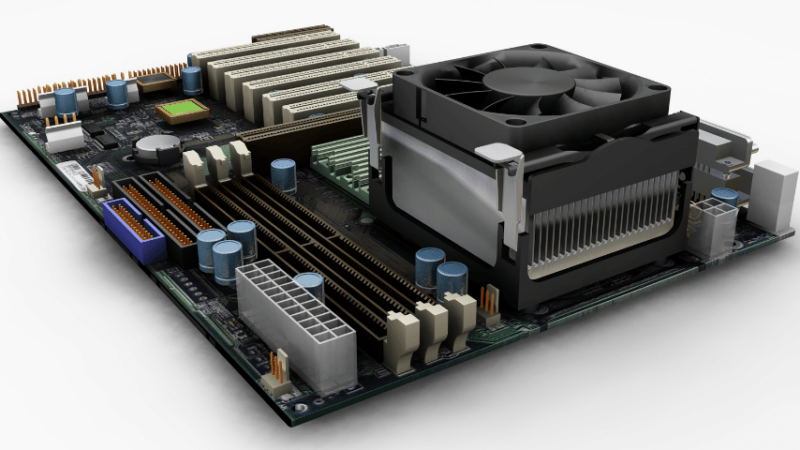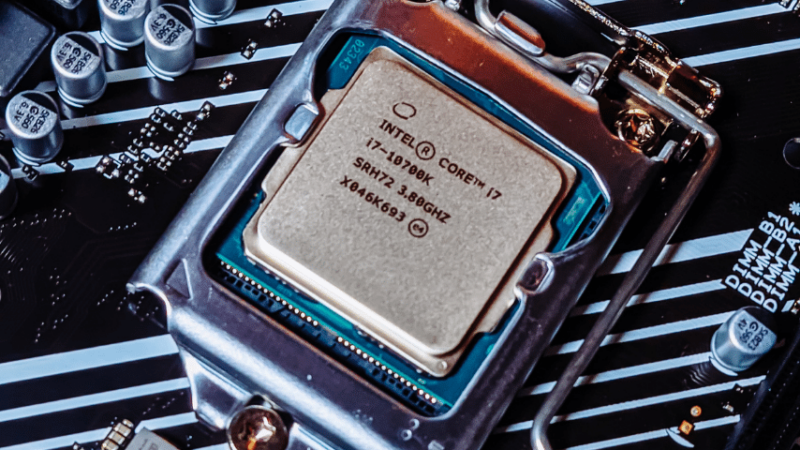If you have more than one person using a machine, SVM mode allows you to create an environment that is more secure than setting up separate Windows user accounts.
Alternatively, you could also be looking for a technique to run many operating systems on a single computer.
While it may be a little confusing initially, even newbies can make the necessary BIOS changes to enable SVM mode.
Table of Contents
What is SVM Mode?
SVM mode lets you create a secure virtual machine within your PC. The SVM technology allows your PC to act as the host. One or more virtual machines then share the hardware resources of the host PC. On a single computer, you may run many operating systems in fully distinct instances.

Secure Virtual Machine (SVM) is a great piece of technology that allows you to run emulators such as Hyper-V, Bluestacks, or VMWare. Your PC’s resources are then shared.
Each virtual environment gets a portion of the RAM, CPU, and hard drive on which to operate.
By using virtual machine applications or emulators such as VMWare or VirtualBox, you can set up and run isolated operating systems inside your primary operating system.
There is no need to reboot or switch partitions when accessing your virtual machine nor do you need to create a separate operating system install partition.
If you wish, you can run a Linux or Mac Virtual Machine inside the Windows operating system installed on your computer.
However, not all emulators are the same. The emulators or hypervisors, come in many different shapes and sizes depending on your needs.
Type 1 Hypervisors
Type 1 hypervisors run directly on the hardware of the host computer. It replaces the traditional host operating system and manages the virtual machine’s resources directly.
This is what you would commonly find in an enterprise data center or environment that is server-based.
Linux has KVM built into its architecture but you could as easily have Microsoft’s Hyper-V or VMware vSphere available.
Type 2 Hypervisors
Type 2 hypervisors or hosted hypervisors are found on regular operating systems and run as software layers or applications.
This is the hypervisor that you would commonly use on your personal computer. Well-known options are Oracle’s Virtual Box and VMware Workstation.
Hypervisor Security Concerns
Before we get into how you can enable SVM mode, let’s touch on the security aspects of virtual machines.
The VM environment is distinct and separate from the rest of your PC.
Other than that, the virtual machine is just another computer.
One of the benefits of running a virtual machine is that you can test and tweak it as much as you want and if you break it, you can set it up again without it negatively impacting your host computer.
If you’re interested in learning about hacking, then setting up a virtual machine is one of the first things you’ll learn to do.
Another user can hack into your virtual machine and still not have access to your host PC.

Hypervisors Can Be Hacked
However, this does not exclude the hypervisor from being hacked.
If that were to happen, then all the instances that you are running on the host machine will be vulnerable. For this reason, you should acquaint yourself with the security protocols and setup requirements of the hypervisor you choose to use.
So how do you get to enjoy SVM mode on your computer?

How to Locate SVM Mode In BIOS?
Before you install the emulator or hypervisor on your computer, you need to enable SVM mode.
How you activate SVM mode will depend on your computer’s motherboard type.
You’ll find the settings buried deep within the sub-menus of your particular BIOS.
Here are some of the more common motherboard manufacturers and the process you must follow to access their SVM mode option:
- Asus motherboards – Repeatedly press the Delete key after powering up your PC. The BIOS will come up, at which time you can press F7 to access Advanced mode. If you have a ROG series motherboard, you can select advanced mode without pressing F7. Under Advanced CPU Configuration, you’ll find the option to enable SVM mode.
- MSI motherboards – Press the power button and continue pressing the Delete key until the BIOS screen appears. Select the Advanced option from the menu and then find the option to enable SVM mode.
- Gigabyte motherboards – Access the BIOS screen by pressing the Delete key continuously after switching your computer on. Select the Advanced option from the menu and then select the Advanced CPU Settings option. Select the option to enable SVM mode.
- Asrock motherboards – After turning your PC on, press the Delete key repeatedly until the BIOS screen appears. Select the Advanced option and then select CPU Configuration. Find and enable SVM mode.

Virtual Machines Are Less Powerful Than Normal Operating Systems
Once you have enabled virtualization, the service uses some resources. This has a minor influence on the computer system’s overall performance.
You can expect to lose around 5% of the performance of your CPU and your memory. However, performance loss doesn’t increase with the number of instances you run.
By way of example, using cutting-edge technology, a single machine was able to use virtualization to run 7 gaming rigs.
And that was in 2016!
When considering hardware requirements for your virtual machine, the components that experience the highest use are the CPU and RAM.
So, if you are interested in pursuing the virtual machine model, then you may want to consider upgrading these components. Ideally, you‘ll need at least a Core i7 and 16 GB of RAM.
It’s not necessary if you are just experimenting with a virtual machine. But if you are planning on running the virtual machine alongside your regular computer, it may very well be worth the extra expense.

Frequently Asked Questions about SVM Mode
What if I can’t find SVM Mode in my BIOS?
Make sure your computer has an Intel CPU.
Intel processors and motherboards require you to enable Intel VT-x or some alternative option to enable virtualization in your Intel BIOS.
AMD processors have a different name for it, usually AMD-V, as opposed to SVM Mode.
What you must do, is select one of the BIOS options that enables virtualization.
How can I see whether my machine supports virtualization?
The quickest way to check if virtualization is enabled on your computer is to open the Task Manager (CTRL+SHFT+ESC) and select the Performance Tab.
Towards the bottom of the list of specifications, you should see whether virtualization is enabled or not.
How do I turn off SVM?
To switch off SVM, enter the BIOS screen at startup and select the Advanced option. Under SVM mode, select the enable/disable option and save your selection.
Allow your machine to boot up and check in the Task Manager that virtualization is turned off.
Conclusion
SVM Mode is a useful and necessary tool for both developers and any computer user who wants to get the maximum benefit from their computer system.
The ability to run multiple virtual machines using separate operating systems provides a host of opportunities for advanced computer users.
It would not be possible for the internet to run as efficiently as it does without the use of SVM technology.

